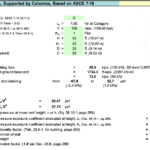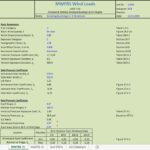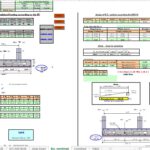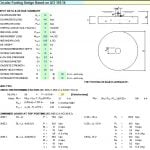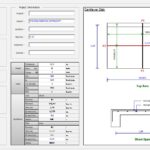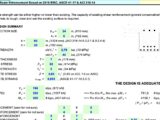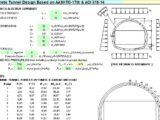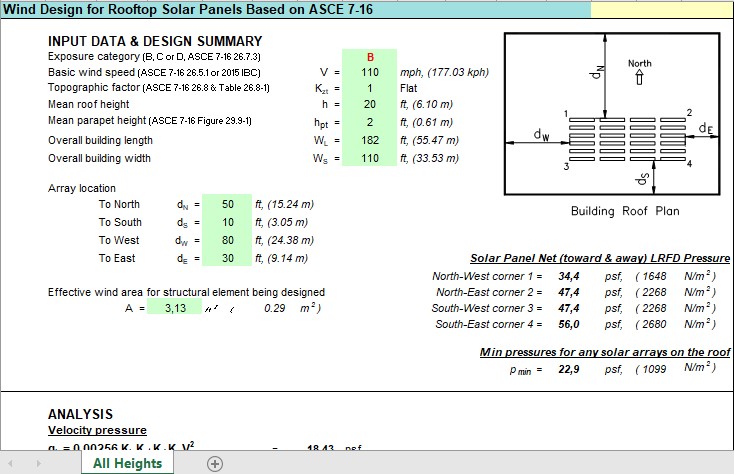
Wind Design For Rooftop Solar Panels Based on ASCE 7-16 Spreadsheet
2 January 2025Table of Contents
Wind Design For Rooftop Solar Panels Based on ASCE 7-16 Spreadsheet
As rooftop solar panel installations continue to rise, designing for wind loads has become a critical factor in ensuring their safety and longevity. Improper wind design can lead to structural damage, reduced efficiency, and even system failure. In this article, we’ll explore the fundamentals of wind design for rooftop solar panels and how to ensure your installation is built to withstand the elements.
Why Wind Design Matters for Rooftop Solar Panels
Rooftop solar panels are exposed to various environmental forces, with wind being one of the most significant. High winds can create uplift forces, lateral pressures, and vibrations that may compromise the stability of the panels and the building structure. Proper wind design ensures:
- Safety: Prevents panels from detaching or causing damage during strong winds.
- Efficiency: Maintains the optimal positioning of panels for maximum energy generation.
- Longevity: Reduces wear and tear caused by wind-induced stress.
- Compliance: Meets local building codes and standards.
Key Factors in Wind Design for Solar Panels
1. Wind Load Analysis
Understanding wind loads is the first step in designing a wind-resistant solar panel system. Factors to consider include:
- Geographic Location: Wind speeds vary by region. Coastal and high-altitude areas typically experience stronger winds.
- Building Height and Shape: Taller buildings and complex roof designs experience higher wind pressures.
- Panel Placement: Panels near roof edges and corners are subject to greater wind uplift forces.
2. Mounting System
The mounting system plays a crucial role in resisting wind loads. Key considerations include:
- Fixed or Adjustable Mounts: Fixed mounts are generally more resistant to wind, while adjustable mounts may require additional reinforcement.
- Material Strength: Use corrosion-resistant materials like stainless steel or aluminum to withstand wind-induced stresses.
- Anchoring: Securely anchor the system to the roof structure, ensuring compatibility with the building’s design.
3. Panel Tilt and Orientation
The angle and orientation of solar panels influence their wind resistance:
- Lower Tilt Angles: Reduce wind uplift but may affect energy generation.
- Optimal Orientation: Align panels to minimize wind exposure while maximizing sunlight capture.
4. Wind Deflectors
Installing wind deflectors around panels can help divert airflow and reduce uplift forces. These are especially useful for flat roofs where wind turbulence is higher.
5. Building Codes and Standards
Adhering to local and international standards, such as the ASCE 7-22 (Minimum Design Loads for Buildings and Other Structures), ensures compliance and safety. Engage a structural engineer to verify that your design meets these requirements.
Best Practices for Wind-Resistant Solar Installations
1. Perform a Wind Tunnel Test
For large-scale installations, consider wind tunnel testing to simulate wind effects and optimize the design.
2. Regular Maintenance
Inspect mounting systems and fasteners periodically to ensure they remain secure and free from corrosion or damage.
3. Use Certified Products
Choose mounting systems and components certified for wind resistance by reputable organizations.
4. Engage Professionals
Work with experienced engineers and installers who understand the intricacies of wind design for solar panels.
Benefits of Proper Wind Design
Investing in proper wind design for rooftop solar panels provides long-term benefits, including:
- Reduced Risk: Mitigates potential damages from extreme weather.
- Lower Maintenance Costs: Ensures the durability of the system.
- Enhanced Energy Production: Keeps panels in optimal position despite environmental conditions.
- Compliance and Peace of Mind: Meets all safety and regulatory standards.
Conclusion
Wind design is a crucial component of any rooftop solar panel installation. By considering factors such as wind loads, mounting systems, and building codes, you can ensure a safe, efficient, and long-lasting solar power system. Don’t leave your installation to chance—invest in professional wind design to protect your solar panels and maximize their performance.

